Saint Errant Brewing | Skosh Barrel-Aged Stout

- Eric Griffin
- On April 9, 2024
In today’s craft beer industry, it’s becoming increasingly difficult to stand out. To this Saint Errant Brewing said “hold my beer,” throwing something entirely new into the barrel-aged stout game. On March 19, the Chicago brewery announced the release of Skosh. A whimsical idea morphed into a pragmatic reality, this oak-aged imperial stout was packaged in a bag. In a box. With a pour spout. There was no way that we weren’t going to showcase craft beer going full Franzia mode, so we asked Saint Errant co-owner Brent Banks to send a box our way to feature on PorchDrinking.
Saint Errant
This Illinois-based nano-brewery has been on the scene for about seven years, a project inspired by the travels and friendships built out of the growing craft beer community. Founded by Brent Banks and Ryan Jacobs, the name for the brewery is inspired by their humble beginnings, brewing five-gallon batches anywhere they could—at home, at a homebrew club, in friends’ backyards, you name it. To this day the pair contract brews all of their beer and does not operate a taproom or production space of their own.
And yet, many still consider Saint Errant one of the Midwest’s hidden gems. In fact, they’ve been on PorchDrinking’s radar since 2017 when we featured their Strange Loops IPA. They’ve been providing craft beer drinkers with a varied selection of styles since then, and their love for experimentation has culminated in their most recent high-gravity release.
Skosh
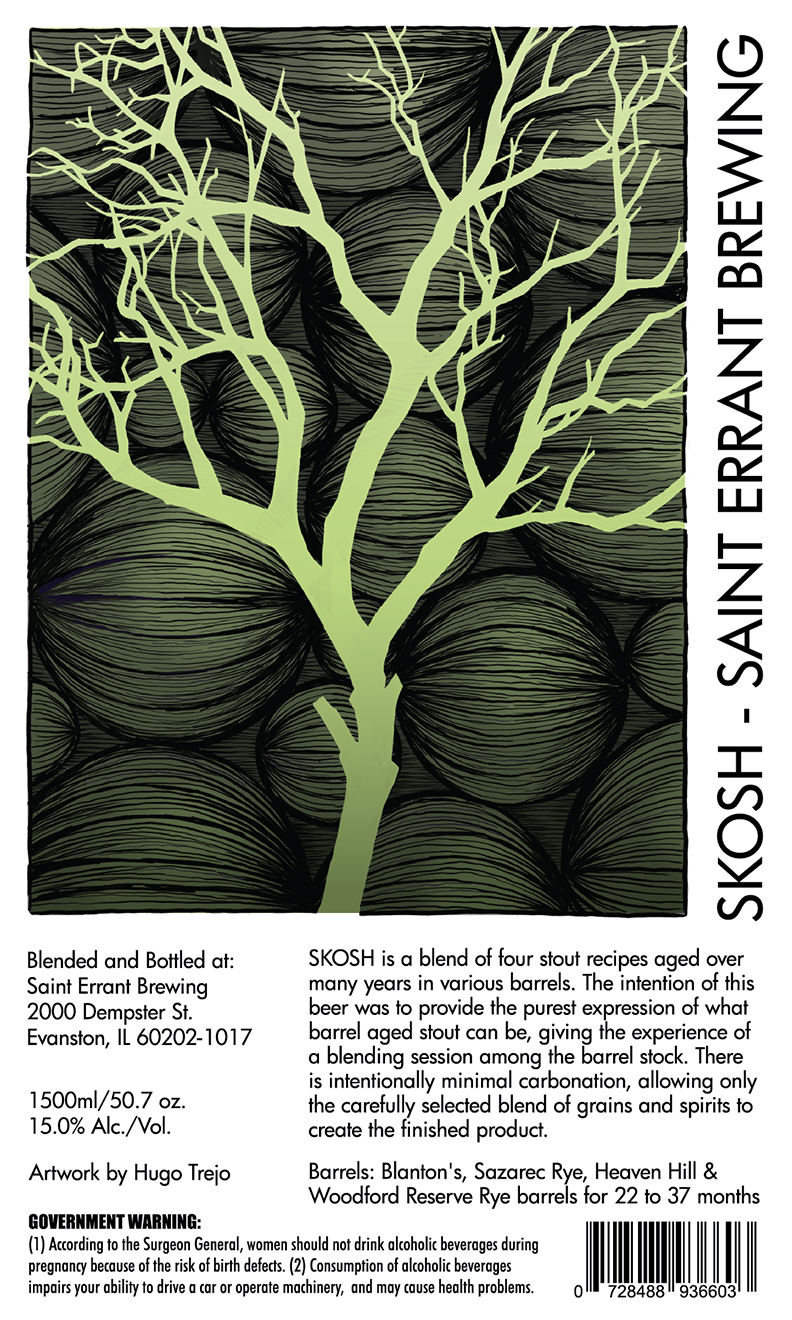
The Recipe
This barrel-aged imperial stout blended four stout recipes aged between 22 and 37 months in Blanton’s, Sazerac Rye, Heaven Hill and Woodford Reserve barrels. Saint Errant’s team noted the intention of this beer was to provide the purest expression of what barrel-aged stout can be. Consumers generally don’t get the experience that brewers do—tasting through barrel stock to determine recipes. Skosh was Banks and Jacobs’ way of providing a blending session experience to the average beer drinker. Additionally, minimized carbonation of Skosh allows only the carefully selected blend of grains and spirits to create the finished product.
The Vessel
This is where the release gets interesting. Skosh is packaged in a bag—in a box. With a volume of 1500 milliliters per box! For those based outside of the States, this concept isn’t new or surprising. In Finland, sahti is traditionally sold in bags. In the U.K., bright beer and farmhouse cider is often packaged in bags and boxed as well. Even lambic beer from producers like Oud Beersel has been presented this way. But in the U.S., bags and boxes are almost exclusively associated with cheap wine and definitely not beer. The reality is that while there is absolutely nothing wrong with packaging in bags, plastic and carbonation do not mix. All of the examples just listed traditionally have—or are known to have—very little or no carbonation. Which speaks to another reason why Saint Errant minimally carbonated Skosh.
All that being said, the idea and execution is a lot of fun and got well-deserved attention. The beer went live on Oznr on March 20, with a limited amount available on draft at Chicago’s The Green Lady beginning March 22. A huge thank you to Banks and the Saint Errant team for allowing PorchDrinking to share this unique experience.
The Review
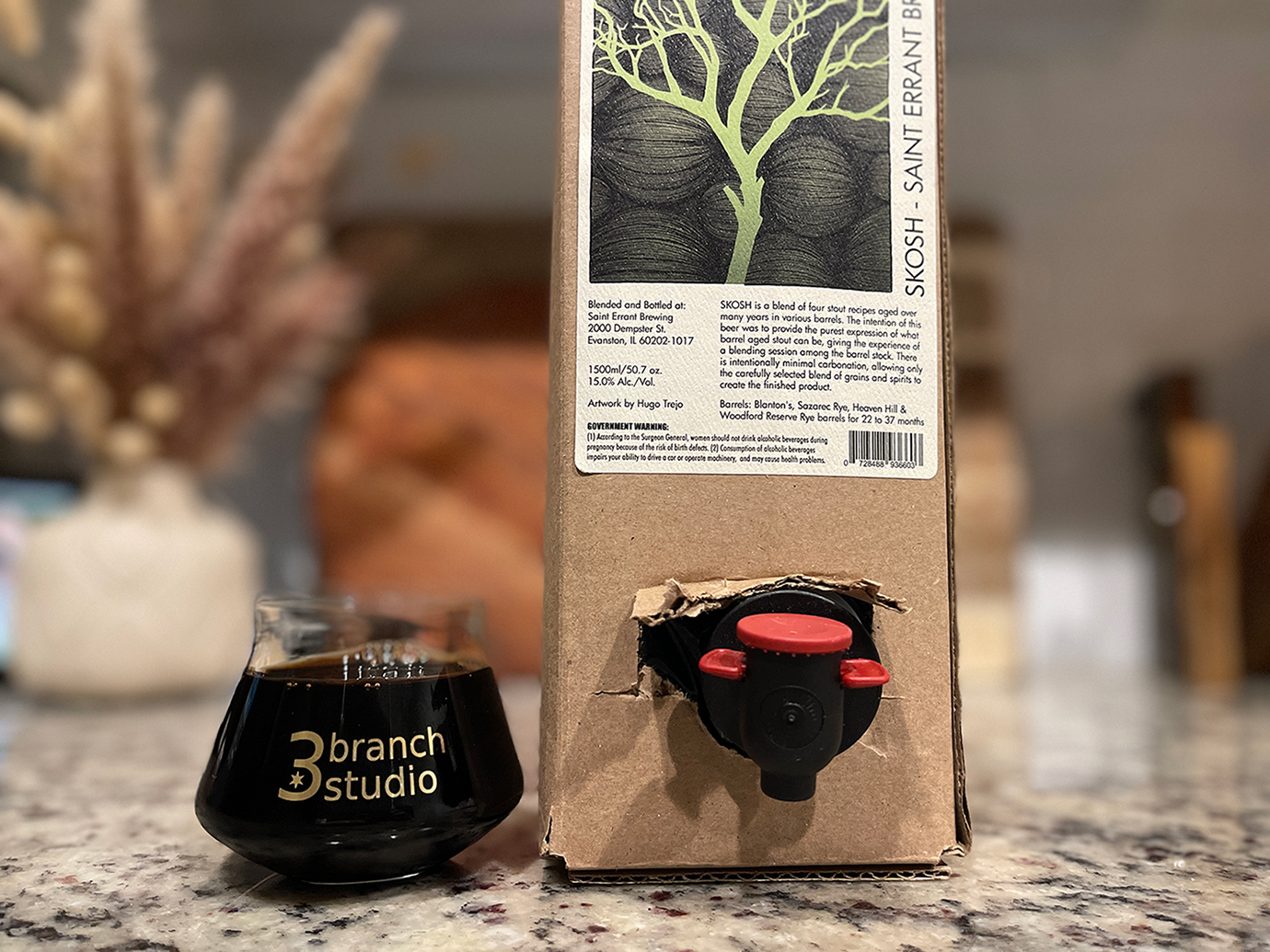
After punching through the perforated cardboard and removing the plastic frame from the pour spout, a two-finger pull from the grips reveals a dark abyss of liquid cascading into the glass. It contains very little carbonation, so even pouring hard from the enclosed bag does not agitate it much.
The pleasant aroma of a smoked chocolate mousse immediately hits the nose. Complementing the balance of sweet and charred are undertones of toasted vanilla, caramel candy and a touch of pipe tobacco. The profile largely characterizes the blend’s extended barrel treatment.
The palate mirrors many of the same characteristics of the nose. Torched oak comes on strong, followed on the mid-palate by dark fruits and a spiced, coconut-y component that reminds us a lot of amburana. Bringing up the rear is residual vanilla, dark roast coffee and baking chocolate.
The mouthfeel works nicely here. At a colder temperature the creamy mouthfeel almost felt like it needed more carbonation to cut it. That said, as Skosh continues to warm it settles in nicely. The 15% ABV provides a great warmth, accompanying the slightest touch of residual bitterness on a long finish.
Straying Off Course
Saint Errant prefers not to play by the rules. The two founders hold quality and experimentation as constant values, and they’re willing to showcase their product and passion however and wherever they can. Skosh not only demonstrated their willingness to push the boundaries of both their product and presentation, but also highlighted their ability to make a top-tier barrel-aged beer.
While the public sale has come and gone for this unique release, there are plenty of people waiting for the right occasion and right group of people to share the experience with. Not to mention, at 1500 milliliters per box, most won’t take it on alone! Step aside, Franzia—Skosh has entered the chat.
Related Posts
Ethereal Brewing | Baba Yaga Imperial Stout... June 8, 2021 | Jereme Zimmerman
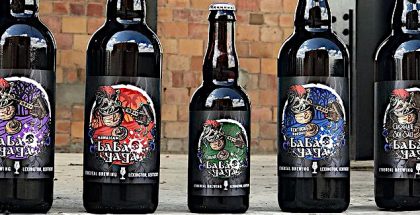
Colorado Beer Beat | Bi-Weekly Beer Release Guide 9/22... September 22, 2022 | Mackenzie Helms
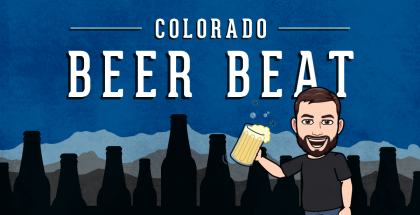
Spiteful Brewing | God Damn Pigeon Porter... July 1, 2016 | Mike Wronski
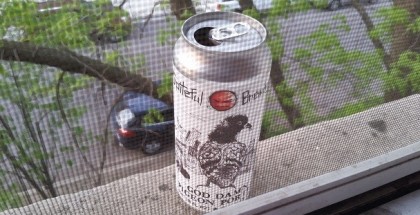
Phase Three Brewing and Affy Tapple Collaboration Beer | A Bushel of Apples... October 23, 2020 | Alex Sertic
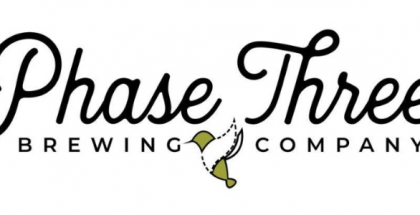



Submit a Comment